Crafting compelling website content has become more essential than ever before, as it helps you attract and retain visitors. Properly optimising website content also increases the potential to rank higher on the SERP and place your website as a trusted authority in the industry.
While it requires a thorough understanding of various parameters such as SEO, writing style, etc. we are making it easier for you. Here are 18 rules to follow to learn how to write content for a website.
These tips ensure that your crafted content will resonate with your target audience, boost your website’s search engine rankings, and drive more traffic.
And if you are looking for professional help with website content writing, we are just a click away!
18 Hacks on How to Write Content for a Website
Are you wondering how to write engaging website content? The idea is to recognise the pulse of your target group of audience and then place a content to make it effective. Check out the following 18 ways you can create engaging and valuable content for your website:
1. Define the Purpose of Your Content
To ensure that you craft great content, you must clearly establish its purpose. Ask yourself why you are writing, and what you are writing.
Questions such as “Am I trying to educate, persuade, entertain or inform my readers?”, and “What do I want my readers to do with my content- share, sign up for a newsletter or purchase my company’s product and service” can help to define your content’s purpose.
Finish your evaluation with a short summary of your ideas. Did the product fulfil its promises? Would you suggest it? You may assist your friend by expressing your honest opinion.
In short, your content’s purpose is key to engaging your readers and making them stand out. So, let your words fly!

2. Understand Your Target Audience
Knowing and communicating with your target audience can help you to understand their preferences and needs. This will further help you in crafting content that resonates with their search intent. For this, you must carry out effective market research and evaluate the customers who buy your products and services frequently.
For instance, how to write content for website of a fashion and clothing brand? Here, first, the target audience will predominantly be women of different age groups. So, to reach them effectively, you need to use language and tone that resonate with them. You can use tips for fashion content writing once you have established the target audience.
So, to first determine your target audience based on your content idea, you can do quick demographic research. Use tools like Google Analytics to identify the types of visitors you get on your website. You can categorise them by location, the performance of your content, the pages they mostly visit, and the number of views you get.
Once you understand the type of viewers you attract, you will have an easy time crafting the topics and approach of your content. For instance, if they prefer visual content, you may want to create infographics or videos. If they prefer longer-form content, you can write in-depth articles.

3. Conduct a Competitor Research
Conducting competitor research is beneficial for formulating your content strategy. You must list your competitors and review their business core and positioning.
Using SEO tools such as Ahrefs and Semrush can help you evaluate your competitor’s website ranking on Google.
Ensure to review their on-page content and scrutinise if they are posting glossaries, listicles or how-to blogs. You shall also analyse the frequency of their published posts and the keywords they mostly use.
Curated and detailed information about your competitors will help you generate content that serves user intent and ranks accordingly.
4. Write Attention-Grabbing Headlines
The first thing your readers will notice is your title, and it may make or break your content. When creating intriguing headlines, keep in mind that your goal is to arouse curiosity and interest in your reader’s mind.
Using detailed and descriptive language is one excellent approach to do this. For example, if you’re writing an article about healthy food, you might title it “Revitalise Your Body with These Top 10 Delicious and Nutritious Recipes.”
This headline makes use of sensory words to evoke the emotions of your readers. It not only promises excellent and healthful foods, but it also employs the term “revitalise” to imply that the reader’s body would feel renewed and invigorated after consuming these dishes.
It all starts with creating headlines that captivate readers with rich language and emotional responses. Consider your headlines to be bait – use the right words and you will reel them every time!

5. Do Your Keyword Research Thoroughly
SEO, or search engine optimisation, is an important part of current content writing. Knowing how to use keywords effectively in your content can help bring high-quality traffic to your website or blog.
To start with, think about the subject of the content and what keywords your target audience could be searching for connected to that issue. Keywords are essentially the terms people type into Google when they search for anything. Therefore, long-tail keywords will help you establish your content’s intent.
Tools like Google Keyword Planner, SEMrush, and Ahrefs can help you identify popular search terms and related keywords.
Also, research secondary keywords that are related before planning how to write content for a website. For example, if you’re creating an article on the “best budget laptops,” you may automatically incorporate keywords like “affordable laptops,” “budget-friendly laptops,” and “low-cost laptops” throughout your text.
6. Write an Engaging Introduction
Did you know that Indian users spend about 6 hours a day on the Internet? What do you think engages them for so long? The answer is as simple as the quality of the content!
The introduction to your article is your major chance to grab and hold readers’ attention. It’s your moment to entice them and keep them reading. It acts as a bridge that connects your opening sentence to the main body of your content.
But you have to be concise. Write an introduction that provides a preview of what readers can expect. Keep the elaboration for the content body. For example, if you are looking for how to write content for a website on travels and vacations, youl could start with something like “Dreaming of a vacation? You’ll be able to arrange the perfect trip without breaking the budget if you follow these secret tips.” This not only establishes the tone of the essay but also sparks the curiosity of readers and offers them a reason to keep reading.
Always keep your introduction brief and to the point. Instead of giving away too much information, present a teaser that leaves readers wanting more. Moreover, try to use the primary keyword in this section for better optimisation.
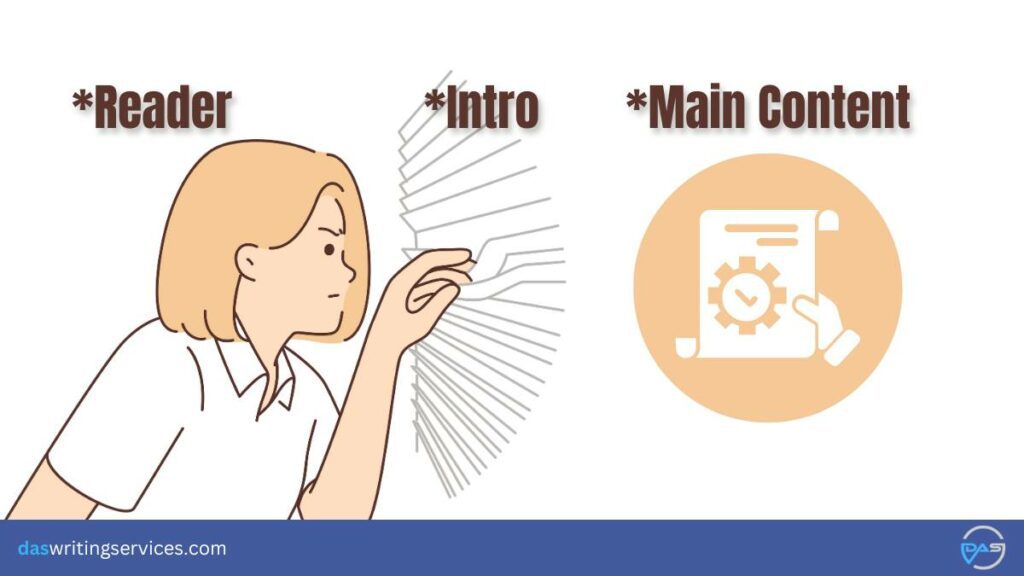
7. Adhere to the Inverted Pyramid Model for Writing
The inverted pyramid model is a popular strategy of how to write content for website. It includes placing the most relevant information at the top of the content and subsequently adding additional information. By doing so, you can swiftly attract the interest of your audience and make it simple for them to figure out whether or not to continue reading.
Assume you’re writing about the official launch of a new smartphone. In such a case, you could choose to begin with the most important characteristics that distinguish it from other phones on the market. This might include its camera, battery life, or screen resolution. By starting with the phone’s most notable features, you’re offering your readers the information they want right away.
As you continue writing, you can then provide additional details and context that support the primary information. This could include things like technical specifications, design details, or user reviews.
This approach is effective because readers can quickly get the information they need and decide whether to continue reading. Moreover, it is easy to read, engaging, and informative.
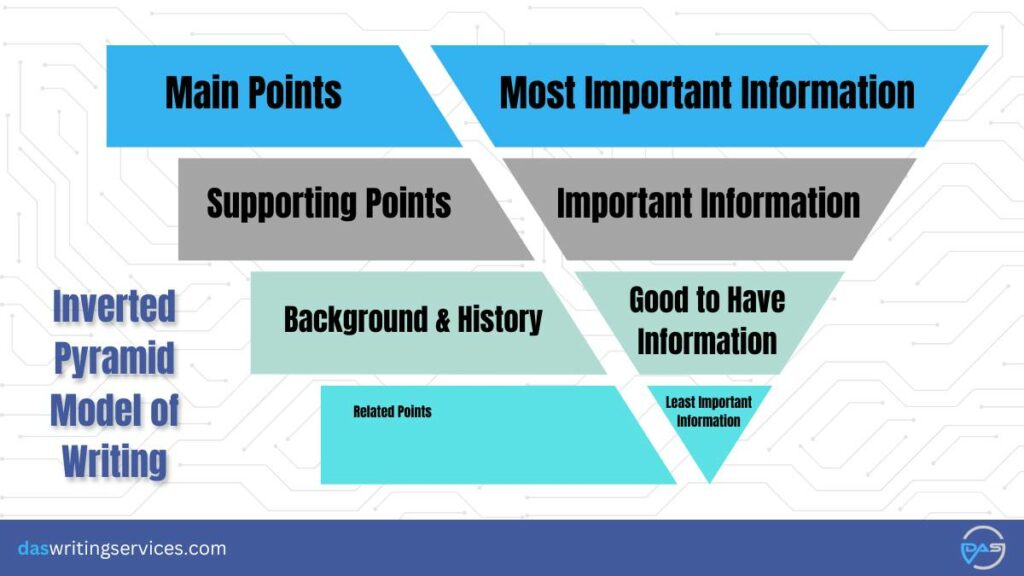
8. Avoid Jargon and Keep the Language Easy
To understand how to write content for website, first remember that it is not an academic paper. Therefore, be careful of the terms you use. The key to crafting content that resonates with your audience is to use clear, easy-to-read language. Use technical language and complex phrases to avoid confusing your audience.
Instead, concentrate on using basic language that your audience will comprehend. While generating website content ideas break difficult topics down into simpler ones and offer examples to support your claim.
For example, if you’re writing about financial investments, you could define “dividend yield” as “the percentage of the company’s earnings paid out to shareholders in the form of dividends.”
You help your readers comprehend the subject by delivering a clear and straightforward explanation without overloading them with technical jargon. You can also use real-world examples and realistic analogies for complicated subjects. Remember, your content must be understandable by readers from any region, age group and target.

9. Take the Help of AI Tools for Generating Ideas
While human-generated content is known for its creativity and emotional resonance, AI writing tools offer efficiency. We, as humans, sometimes zone out while creating an outline for a topic.
That is when using AI tools is beneficial. It automated tasks such as generating fresh ideas, drafting an outline of a topic or creating relevant titles for our content.
This further enhances efficiency and saves you time. Hence, by leveraging your emotional intelligence and the efficiency of an AI tool, you can create compelling content that serves user intent.
10. Check for Grammatical Errors
If you want to master how to write content for website that engages your audience and draws in traffic to your site, make sure your writing is free of grammatical errors. Such errors can make the content difficult to read and make you look unprofessional.
Use grammar-checking tools like Grammarly to make sure that your text is polished. It can identify grammatical errors in your writing as well as provide suggestions for improvement. However, it is equally critical to proofread your material yourself or have it reviewed by someone else.
You will be able to produce website copy that is professional, interesting, and easy to read if you take the time to check for grammatical problems. This will assist you in attracting and retaining your target audience.
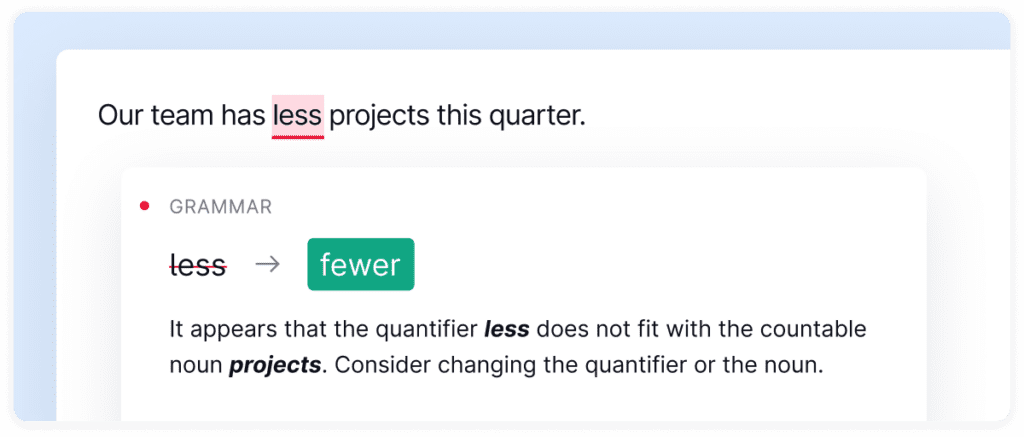
11. Consider the Readability of Your Content
Readability is crucial for website content. That is because highly readable content attracts and converts visitors. Make sure that your sentences are short while you use simple language to make complex concepts easy to understand.
Break down complex ideas into smaller paragraphs and use bullet points or numbered lists to make information scannable. Additionally, it is beneficial to keep a conversational tone throughout the content.
You should also avoid passive voice as much as possible. Writing in an active voice can help to connect with your readers better.
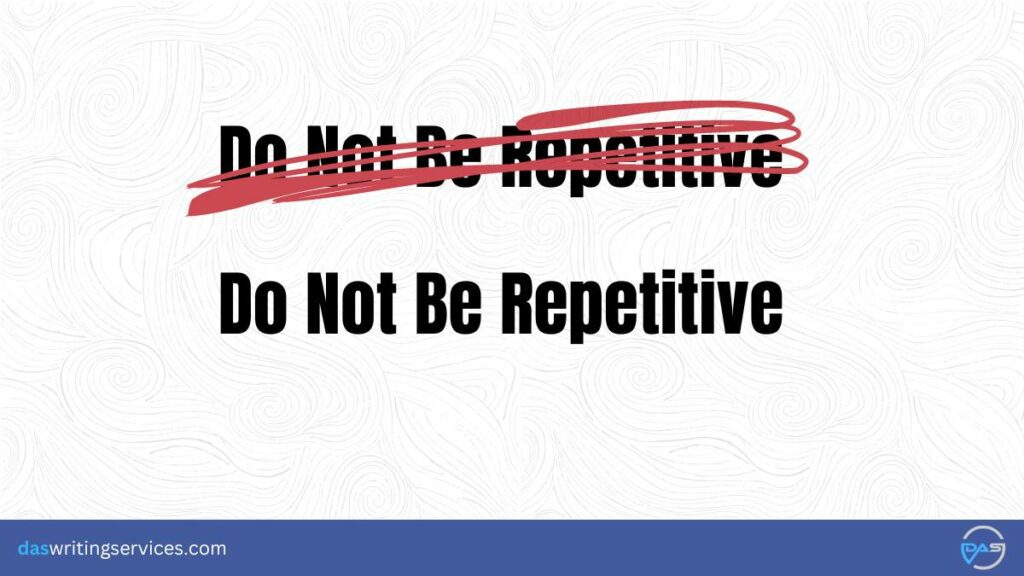
10. Keep Your Content Scannable
Your writing may be flawless, but is it scannable? How can you achieve that?
Organise your material into legible sections to make it easier to scan. Instead of extensive paragraphs, use bulleted or numbered lists. Sections with descriptive subheadings should be used to group relevant content. This allows your viewers to swiftly locate what they’re looking for.
Make sure to provide lots of white space around your material. This enhances readability and increases the enjoyment of reading. Readability tools, such as Yoast SEO, may analyse your writing and offer you a readability score that takes into account criteria such as sentence length and language difficulty.
With us, you can stay assured of the quality, readability as well as skimmability of the content. We follow all the checks to boost your content and rank it at the very top.
11. Avoid Keyword Stuffing
Incorporating relevant keywords into your website content is critical for enhancing your search engine results. But be cautious not to misuse them. Keyword stuffing might harm your SEO efforts by making your content appear spammy.
Instead, sprinkle keywords across your material naturally but carefully. To reduce redundancy and make your material more engaging by utilising related terms and synonyms. For example, if you’re writing about “best vacuum cleaners”, diversify your keyword usage by using terms like “popular vacuum cleaners” or “most used vacuum cleaners.” This will assist you in striking a balance between SEO optimisation and producing high-quality content that appeals to your target audience. However, making variations may help, but it will defeat the purpose if you keep them in every other sentence. Instead, you can always use pronouns.
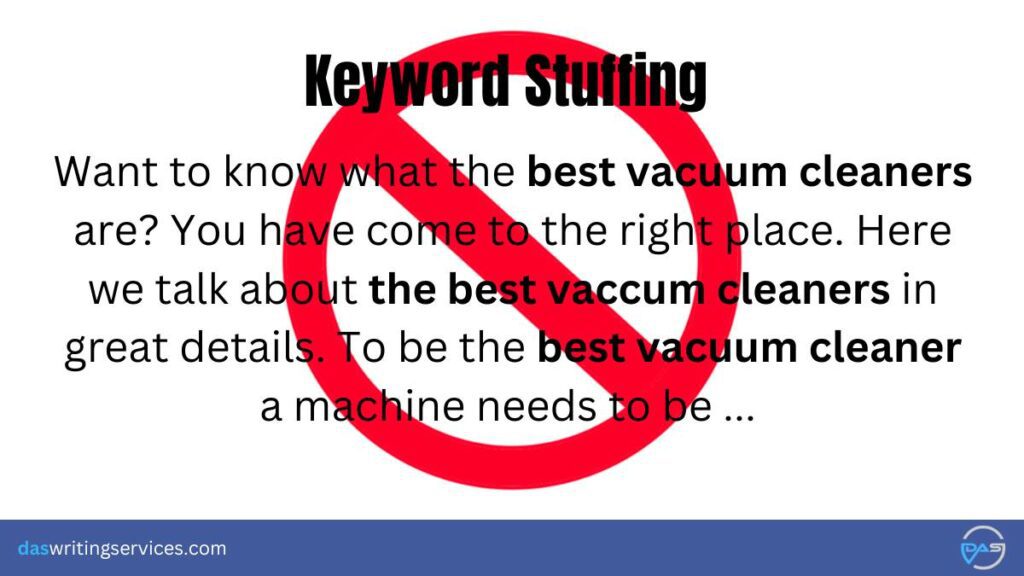
12. Use Clear and Compelling Calls-To-Action
A call-to-action (CTA) is a prompt that encourages your audience to take a specific action, such as subscribing to your website or making a purchase.
Your CTAs should be clear, simple, and visually appealing so that your audience knows what action to take.
Use action verbs that express a sense of urgency and enthusiasm to build an enticing CTA. Some examples are “buy,” “Subscribe,” “download,” and “register.” Combine these verbs with intriguing words like “limited-time offer” or “exclusive deal” to boost the effectiveness of your CTAs.
To make your CTAs stand out, utilise contrasting colours and strong typefaces. This will capture your audience’s attention and improve the likelihood that they will do the required action.

13. Don’t Write Chunky Paragraphs
Writing chunky paragraphs can negatively affect the retention power of your viewers. To avoid that, you should break your text into shorter and visually appealing paragraphs.
This helps to improve the readability of your text on all devices, including smartphones. You should also add relevant headings and subheadings to guide your readers through your content.
Remember that your goal is to keep readers engaged and scrolling. So avoid things that may overwhelm them and result in increasing the bounce rate of your website.
14. Adapt the Tonality of Your Text to the Content’s Topic
The tone of your content is crucial for connecting with your audience. Ensure to match your writing style to the topic of your content.
For example, when you are writing content on a financial topic, such as credit score, you must maintain an informative and formal tone throughout your writing. That is because serious topics demand a professional approach. This also helps to build credibility for your brand. On the other hand, a tech-savvy audience may appreciate a more technical tone, while a general audience prefers a simpler, more accessible style. Hence, by adapting your tonality, you create content that resonates with readers and keeps them engaged.
15. Ensure There is No Plagiarism
Plagiarism is a serious offence that can damage your website’s reputation and credibility. To ensure originality, it is essential to always cite sources properly when using others’ ideas.
In case you are unable to add something unique to your text, try paraphrasing information in your own words and providing links to the original source. You should also use plagiarism detection tools to scan your content for any unintentional copying.
Hence, you must remember that creating unique, valuable content is key to engaging your audience and establishing your website as a trustworthy source of information.
16. Add Tables for Pointing Out Differences
If you are wondering how to write website content effectively?, then tables can help you with that. Including tables is a fantastic way to present complex information in a scannable format.
This visual tool helps readers understand the differences between blog posts, landing pages, product descriptions, and more, helping them choose the right format for their specific goals.
Additionally, tables can highlight contrasting features of various writing styles, which can guide you towards the tone that best resonates with your target audience.
17. Use Links Appropriately
Incorporating relevant links within your website content is essential to enhance user experience and boost SEO. You should start linking your content to internal pages to guide visitors deeper into your site.
On the other hand, external sources will provide additional value and credibility. Also, you should add descriptive anchor text that accurately reflects the linked content, avoiding generic phrases like “click here.”
Make sure that the links open in new tabs to prevent users from leaving your site entirely. Hence, by using links strategically, you can improve navigation, increase engagement, and drive more traffic to your website.
18. Use Images, Videos and Infographics for the Visual Appeal
Images, videos and infographics are elements that can enhance your website’s visual appeal. It helps to easily grab the attention of viewers and can motivate them to continue scrolling through the article or post.
You can break up lengthy text with relevant images to maintain reader interest. Also, you should add videos to explain complex topics or showcase products in action. Additionally, use infographics to present data and statistics in an easily digestible format.
Therefore, visuals make your content more engaging and cater to different learning styles, ensuring a wider audience connects with your message.
Takeaway
These tips mainly comprise all the do’s and right practices for creating effective and SEO optimised web content. However, you need to also keep in mind the don’ts in your content unless you want to secure the last seat on the Google SERP.
There you have it! Twelve excellent strategies on how to write content for website that engages and informs your audience while driving traffic to your website. By following these guidelines, you will be able to stand out on the crowded internet and keep your readers returning for more. Keep your audience in mind at all times, use clear and concise language, and use headings and layouts to make your information easy to read and understand. You will be a web content writing ace in no time in this race!
Frequently Asked Questions
1. What role do headlines have in web content?
Headlines are vital for internet content because they serve to attract the reader’s attention while also providing a brief description of the content. Effective headlines may also help your website rank higher in searches with the use of proper keywords.
2. What is SEO content writing?
SEO writing is basically a process of researching relevant keywords and crafting optimised content that addresses the user’s purpose in order to rank on the first page of search engines.
3. How to write content for a website using readers’ analysis?
Readers’ analysis helps you to identify the requirements, preferences, and complaints of your target audience. This data may help you drive your content development process and generate material that is relevant, informative, and engaging for your target audience.
4. What are some tips for creating effective calls-to-action in web content?
In order to create effective calls-to-action in web content, use clear and compelling language. Moreover, highlight the benefits of taking the desired action, and ensure the call-to-action is prominently displayed on the page. Use action-oriented language and create a sense of urgency to encourage readers to take action.






Leave a comment